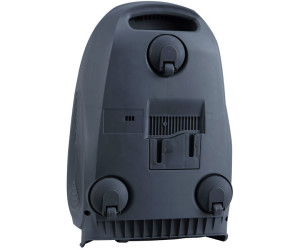This KB will guide you on installing Bitdefender as well as showing you which Kext whitelisting and Privacy Preferences Policy Control (PPPC) profiles whitelisting are required to deploy and install Bitdefender via Addigy.
Bitdefender Antivirus for Mac gets flawless malware-detection results in lab tests and has a nearly nonexistent impact on system performance in our own Tom's Guide tests. MacOS Big Sur (11.0), macOS Catalina (10.15), macOS Mojave (10.14), macOS High Sierra (10.13), macOS Sierra (10.12), OS X El Capitan (10.11) Windows 10 IoT Enterprise, Windows Embedded 8.1 Industry, Windows Embedded 8 Standard, Windows Embedded Standard 7, Windows Embedded Compact 7, Windows Embedded POSReady 7, Windows Embedded Enterprise 7. After upgrading to Mac OS Big Sur I am frequently plagued by errors with temporary file access: $ pgrestore -d dbname -role username -no-password dbname-2021.dump pgrestore: while PROCESSING TOC: pgrestore: from TOC entry. Big Sur is supported by SEP 14.3 RU1 and 14.3 RU1-MP1 only when running on Intel chip. SEP 14.3 RU2, ETA in Spring of 2021, will support Apple Silicon (the Apple M series chip). Neither Apple or Symantec support macOS 10.12.x or older; Mac OS X 64-bit mode is supported. PowerPC processors are not supported as of version 12.1.x.
TABLE OF CONTENTS
How do I set up the Custom Software?
Bitdefender will normally come in a DMG file. To make things as simple as possible, we recommend getting the PKG and XML files that are inside of the DMG and uploading them into Addigy. If you open the Bitdefender DMG, you'll see the files that you will need:
Drag these files into your Desktop folder. You will then upload them into Addigy using our File Manager.
Once the files are added, your custom software should look like this:
Seeing as you'll be using a PKG file, Addigy will automatically generate the installation script. By clicking the Add button, the installation script will be filled in for you.
Once this is done, you can choose to add a condition and removal script as well. After you're all done, save your custom software.
How do I set up the PPPC and KEXT payloads?
PPPC (Policies > Catalog > MDM Configurations > Privacy Preferences Policy Control):
If you're running macOS Big Sur, please add the following identifier and code requirement to your PPPC payload:
Identifier: com.bitdefender.epsecurity.BDLDaemonApp
Code requirement: anchor apple generic and identifier 'com.bitdefender.epsecurity.BDLDaemonApp' and (certificate leaf[field.1.2.840.113635.100.6.1.9] /* exists */ or certificate 1[field.1.2.840.113635.100.6.2.6] /* exists */ and certificate leaf[field.1.2.840.113635.100.6.1.13] /* exists */ and certificate leaf[subject.OU] = GUNFMW623Y)
Here are the identifiers you'll need for :
- Endpoint = com.bitdefender.EndpointSecurityforMac
- Type: choose (Bundle ID)
- DBLDaemon =/Library/Bitdefender/AVP/BDLDaemon
- Type: choose (Path)
Here are the Code Requirements you'll need:
- (Bundle ID): identifier 'com.bitdefender.EndpointSecurityforMac' and anchor apple generic and certificate 1[field.1.2.840.113635.100.6.2.6] /* exists */ and certificate leaf[field.1.2.840.113635.100.6.1.13] /* exists */ and certificate leaf[subject.OU] = GUNFMW623Y
2. (Path): identifier BDLDaemon and anchor apple generic and certificate 1[field.1.2.840.113635.100.6.2.6] /* exists */ and certificate leaf[field.1.2.840.113635.100.6.1.13] /* exists */ and certificate leaf[subject.OU] = GUNFMW623Y
Please follow the sections where these Identifiers & Code Requirements need to be implemented in the Payload:
Identifier Type | |
/Library/Bitdefender/AVP/BDLDaemon | identifier BDLDaemon and anchor apple generic and certificate 1[field.1.2.840.113635.100.6.2.6] /* exists */ and certificate leaf[field.1.2.840.113635.100.6.1.13] /* exists */ and certificate leaf[subject.OU] = GUNFMW623Y |
Bundle ID | identifier 'com.bitdefender.EndpointSecurityforMac' and anchor apple generic and certificate 1[field.1.2.840.113635.100.6.2.6] /* exists */ and certificate leaf[field.1.2.840.113635.100.6.1.13] /* exists */ and certificate leaf[subject.OU] = GUNFMW623Y |
Bundle ID | anchor apple generic and identifier 'com.bitdefender.epsecurity.BDLDaemonApp' and (certificate leaf[field.1.2.840.113635.100.6.1.9] /* exists */ or certificate 1[field.1.2.840.113635.100.6.2.6] /* exists */ and certificate leaf[field.1.2.840.113635.100.6.1.13] /* exists */ and certificate leaf[subject.OU] = GUNFMW623Y) |
Bundle ID | anchor apple generic and identifier 'com.bitdefender.cst.net.dci.dci-network-extension' and (certificate leaf[field.1.2.840.113635.100.6.1.9] /* exists */ or certificate 1[field.1.2.840.113635.100.6.2.6] /* exists */ and certificate leaf[field.1.2.840.113635.100.6.1.13] /* exists */ and certificate leaf[subject.OU] = GUNFMW623Y) |
- Access to Protected Files
- Access to System Admin Files
- Access to File Provider
- Access to Desktop Folder
Kext (Policies > Catalog > MDM configurations > Kernel Extensions):
For the Kext (System Extensions), Bitdefender uses 10 of them. In order to accommodate these in one single payload, each Bundle Identifier uses a comma delimiter & Team Identifier, GUNFMW623Y
Here we've placed all 10 extensions in copy & paste format:

com.bitdefender.FileProtect, com.bitdefender.SelfProtect, com.bitdefender.TMProtection, com.bitdefender.atc, com.bitdefender.mdredr, com.bitdefender.mdrnet, com.bitdefender.mdrfp, com.bitdefender.devmac, com.bitdefender.EndpointSecurityforMac, BDLDaemon
See the screenshot below on how to add these to your payload:
After the inclusion of these PPPC & KEXT MDM configurations, you should be able to successfully deploy Bitdefender using your custom software deployment in your desired policies.
System Extensions (For Big Sur devices) (Policies > Catalog > MDM configurations > Kernel Extensions):
Team Identifier: GUNFMW623Y
Bundle Identifier: com.bitdefender.cst.net.dci.dci-network-extension, com.bitdefender.FileProtect, com.bitdefender.SelfProtect, com.bitdefender.TMProtection, com.bitdefender.atc, com.bitdefender.mdredr, com.bitdefender.mdrnet, com.bitdefender.mdrfp, com.bitdefender.devmac, com.bitdefender.EndpointSecurityforMac, BDLDaemon
SSL Certificate
- Export the Bitdefender SSL Certificate from Keychain on a machine that already has BD installed (this can be your test machine that wants manual approval/permission)
- Use ProfileCreator to create a new payload as below
- Export as mobileconfig, then add to new MDM config for deployment in Addigy
Bitdefender Mac Os
We recommend deploying your Custom Software items to test devices and virtual machines to verify their accuracy and robustness before pushing them out to your devices in production.
Bitdefender Big Sur Update
Bitdefender Big Sur Free
If you have an Addigy account and have additional questions, you can create a ticket by emailing support@addigy.com.
Bitdefender Big Survey
Alternatively, you can submit a support request within Addigy.
